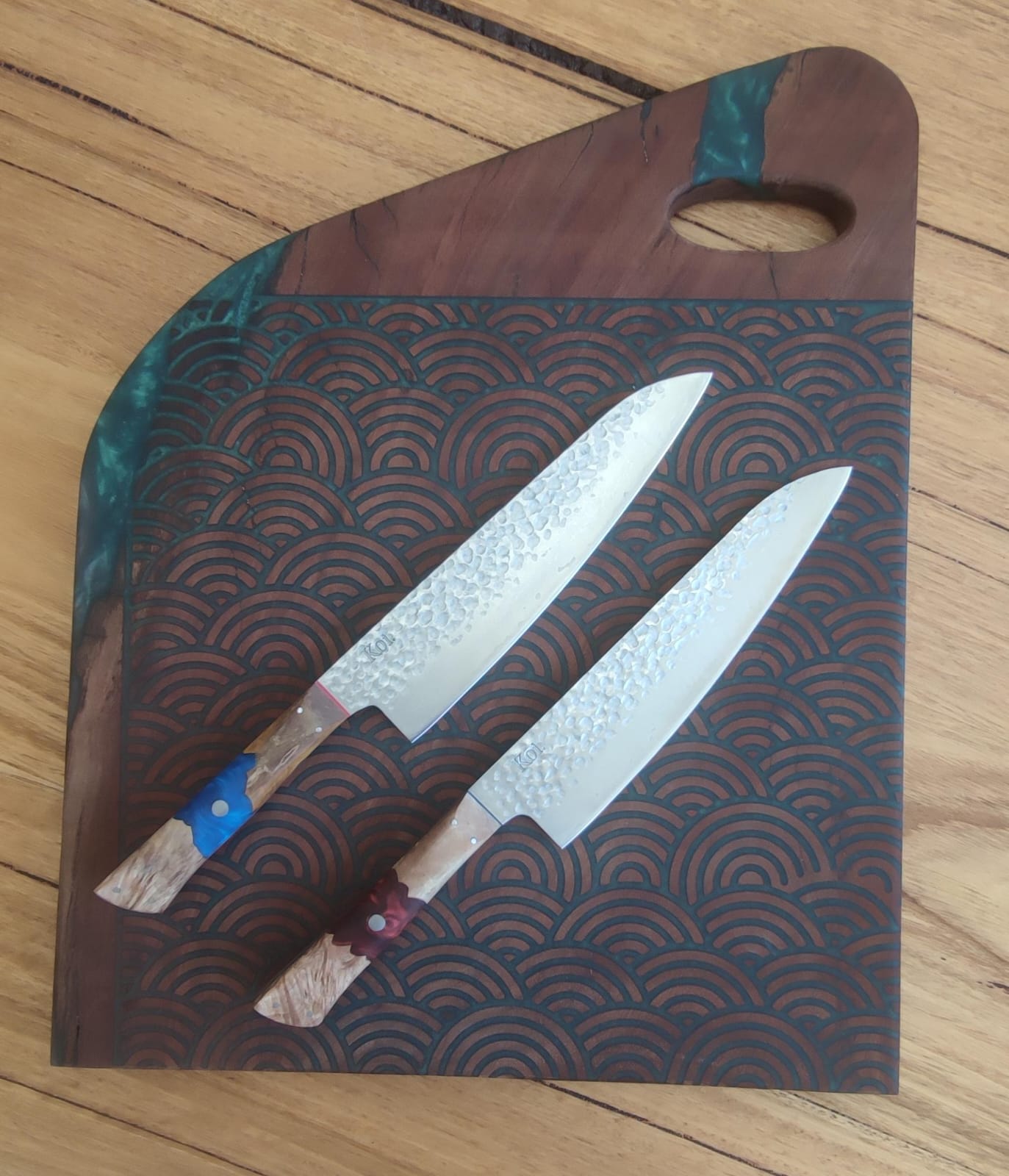As every chef or cooking enthusiast knows, the key to a smooth culinary experience lies in the sharpness of your knives. The terms "honing" and "sharpening" are often used interchangeably, creating confusion about their actual roles in maintaining knife blades. This guide will explore the science behind honing and sharpening, understanding why both are essential for effective knife care.
The Science Behind Dull Knives
Before we embark on the process of honing and sharpening, we must grasp why knives lose their sharpness. Over time, the fine edge of a knife blade begins to curl and bend with regular use. This is primarily due to the microscopic deformities that occur at the blade's edge, resulting in a dull cutting surface. The need for honing and sharpening arises from the necessity to rectify these deformities and restore the sharpness of the blade.
Honing: Preserving Sharpness
Honing is a preventive maintenance technique designed to realign the blade's edge. Contrary to popular belief, honing does not remove metal from the blade but instead straightens the microscopic teeth along the edge. This process is especially effective for knives that are still relatively sharp but need a bit of fine-tuning. A honing rod is a valuable tool for this purpose.
Sharpening: Creating a Fresh Edge
While honing maintains the sharpness of a knife, sharpening is the process of removing metal to create a new edge. It’s a more intensive process reserved for knives that have lost a significant amount of their edge. Whetstones and sharpening systems are commonly used for this purpose. Understanding when to hone and sharpen is critical for effective knife care.
Honing vs. Sharpening: Clarifying the Differences
The primary distinction between honing and sharpening lies in their purpose and the amount of material they remove from the blade. Honing is a regular maintenance task that keeps a knife in good condition between sharpening sessions. On the other hand, sharpening is a less frequent but more robust process designed to address more significant edge degradation.
Best Practices for Knife Maintenance
Now that we've uncovered the basics of honing and sharpening, let's delve into best practices for maintaining your knives.
1. Regular Honing
- Incorporate honing into your routine, especially if you use your knives frequently. A few strokes on a honing rod before each use can keep your knife in optimal condition.
2. Sharpening Frequency
- Determine the sharpening frequency based on your knife usage. High-usage knives may require sharpening every few months, while less frequently used knives can go longer between sharpening sessions. Elevate your knife maintenance routine and enjoy the benefits of razor-sharp precision by exploring our collection of whetstones to enhance your knife sharpening experience.
3. Choosing the Right Tools
- Invest in your knife care with premium honing tools like our Ceramic Honing Rod. Crafted explicitly for Japanese steel knives, this top-notch tool boasts a 26cm (10") sharpening length, a reinforced steel hand guard for safety, and a non-slip handle with a convenient hanging loop. The rod caters to all kitchen knives, particularly those crafted from Japanese high-carbon steel.
4. Consistent Angle
- Maintain a consistent angle when honing or sharpening. This ensures that you achieve a uniform edge across the blade.
5. Whetstone Technique
- When sharpening with a whetstone, master the technique of moving the blade across the stone in a controlled and steady manner. Consistency is key to achieving a razor-sharp edge.
A Guide to Proper Knife Honing
Ensuring your knives remain sharp and safe requires regular honing. Here's a step-by-step guide to hone your knives effectively:
1. Select the Right Honing Rod
- Choose a honing rod suitable for your knife set – options include ceramic, diamond, or steel rods.
- Ensure the honing rod is at least two inches longer than the longest knife in your set.
2. Prepare for Honing
- Place a cutting board on a flat surface.
- Position the honing rod at a right angle on top of the cutting board.
3. Angle Your Knife Blade
- Determine the appropriate honing angle based on your knife type.
- German knives typically require a twenty-degree angle, while Japanese knives benefit from a ten- to fifteen-degree angle.
4. Slide Your Knife Along the Rod
- Hold the knife at the chosen angle.
- With light pressure, slide the cutting edge down the honing rod.
- Gently pull the knife towards your body until the knife's tip reaches the bottom of the rod.
- Repeat this motion three to six times.
5. Repeat on the Opposite Side
- Switch to the other side of the knife.
- Perform the same sliding motion, maintaining the chosen angle.
- Ensure you repeat the movement the same number of times on both sides of the knife
A Guide to Effectively Sharpening Your Knife
If your knife fails to regain its sharpness even after honing, it's time for a more intensive process – sharpening. Here are three approaches to achieve a finely sharpened blade:
1. Professional Sharpening Service
Engaging in a professional sharpening service is a wise choice, especially if you find the process time-consuming and intricate. Many home cooks opt to rely on the expertise of professionals who can skillfully restore the sharpness of their knives.
2. Whetstone Technique
Are you opting for a DIY approach? Using a whetstone is a popular and effective method. Begin by soaking the whetstone for five to ten minutes. Then, at an angle, drag the cutting edge of your knife along the whetstone. If you prefer a manual or electric sharpener, gently place the sharp edge into the designated slot and pull it toward your body for optimal results.
3. Sharpening Frequency
To maintain the longevity of your blades, it's recommended to sharpen your knives every six to twelve months. However, this frequency may vary based on the quality and age of your knives. Additionally, regular honing is crucial to preserving the sharpness of your knives over an extended period.
Find the method that suits you best, and enjoy the satisfaction of a finely sharpened blade whenever you cook.
Conclusion
Honing and sharpening are complementary techniques essential for preserving the longevity and functionality of your knives. Regular honing maintains the sharpness of a blade, while periodic sharpening addresses more significant edge degradation.
A well-maintained knife enhances your culinary experience and ensures safety and precision in your kitchen endeavors. Equip yourself with the knowledge and tools needed to keep your knives in optimal condition, and you'll enjoy the benefits for years.




